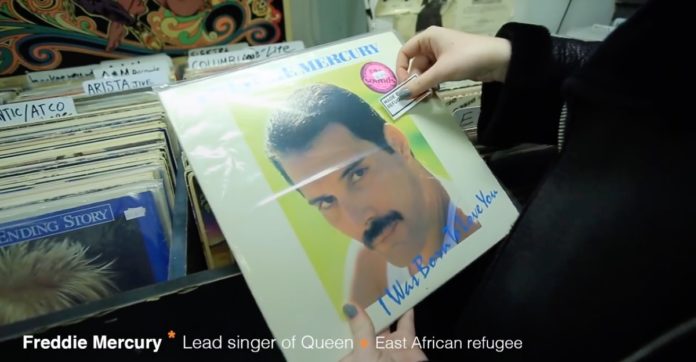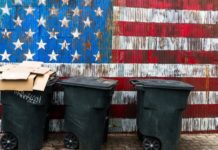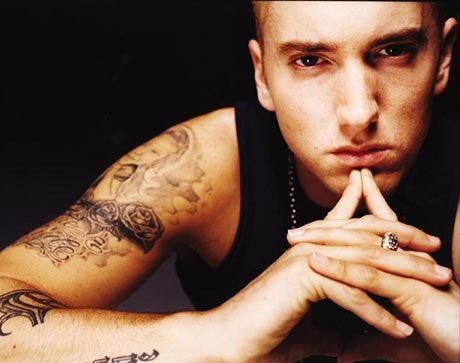
Did you know that Sriracha was the creation of a Vietnamese refugee named David Tran? Neither did art students Jillian Young and Kien Quan.
The Miami Ad School students were reading up on the refugee crisis and how refugees have so often been treated as unwelcome through history when they came to a realization: Refugees have probably lent a lot to society in ways many of us don’t even know about .
After stumbling upon the fascinating refugee history of Sriracha , they set out to find other refugee-created products that exist in the world around us.

With a little research, the pair became aware that not only have refugees made some iconic products, but it’s almost unimaginable to think of a world without significant contributions to art, literature, science, and technology.
Refugees are not “takers” or some sort of net-negative drain on whatever country takes them in. That couldn’t be further from the truth.
Here are just 30 things refugees have constructed or done that you should know about :
German refugee ( 1) Albert Einstein helped shape the modern understanding of physics with his body of scientific activities such as the theory of relativity and his role in developing quantum theory. Austrian-born refugee ( 2) Carl Djerassi helped invent the birth control pill. In 1922, ( 3) Alec Issigonis , fled Turkey before going on to designing the iconic Mini Cooper.

( 4) Enrico Fermi was instrumental in the development of the atomic bomb, ( 5) Sergey Brin co-founded Google, and ( 6) Max Born won the 1954 Nobel Prize in Physics for his work on quantum mechanics. Millions of people in the world have read ( 7) Anne Frank ‘s diary. Regrettably, Frank and her family were turned away when they sought asylum in the U.S ., just like (8) Felix Salten , the author of “Bambi, ” who fled Austria for Switzerland in 1936.
( 9) Victor Hugo , writer of jobs such as “Les Misrables” and “The Hunchback of Notre Dame, ” fled France. “Heart of Darkness” writer ( 10) Joseph Conrad , 1929 Nobel Prize in Literature winner ( 11) Thomas Mann , and “The House of the Spirits” author ( 12) Isabel Allende were also refugees.

At 24 years old, ( 13 ) the Dalai Lama was necessary to flee Tibet. A human rights proponent, the Dalai Lama won the 1989 Nobel Peace Prize. Philosopher ( 14) Karl Marx fled Germany for London, philosopher and “The Open Society and Its Enemies” writer ( 15) Karl Popper fled Austria as a child, and famed psychoanalyst ( 16) Sigmund Freud fled Austria to escape Nazi persecution.

Queen vocalist ( 17) Freddie Mercury was endure in Zanzibar but fled with his parents to London amid a violent revolution. Composer ( 18) Bela Bartk found refuge in the United States during World War II. Singer < strong >( 19) K’nann was a refugee from Somalia, musician ( 20) Regina Spektor ‘s household fled Russia for the United States when she was a child, and vocalist ( 21) Gloria Estafan was a Cuban refugee. Sri Lankan artist ( 22) M.I.A . , Haitian ( 23) Wyclef Jean , Yugoslavian ( 24) Rita Ora , and Jamaican ( 25) Bob Marley all have histories as refugees as well.

The world of politics has its own share of refugees, including South African President ( 26) Thabo Mbeki , U.S. Secretaries of State ( 27) Madeleine Albright and ( 28) Henry Kissinger , and Canadian legislators ( 29) Maryam Monsef and ( 30) Adrienne Louise Clarkson were all refugees before entering public service.

So how are you to know if the status of refugees is responsible for helping generate something you enjoy?
After all, it’s not like every bottle of Sriracha or every Regina Spektor album comes with a handy label. Until now, that is.
Yong and Quan use their designing abilities to create precisely that launching the label as part of their Made by Refugee campaign, a “product hijacking” operation. Utilizing the orange and black refugee flag from the 2016 Olympics, the pair designed some simple stickers with a powerful message of recognition.

The sticker template is available for anyone to print out and place on refugee-made products to help spread awareness on their own.
In doing so, Quan and Young hope the stickers are able to shift how people find refugees as a group.
“People cast[ refugees] as beggars, unassimilated foreigners, or burdens on a societys resources, ” writes Quan in an e-mail. “[ Refugees] are rarely emphasized for their individual talents or potential. We wanted to challenge the stereotype by highlighting the contributions they have made to our everyday lives.”

For more about the campaign, check out their Facebook page and watch the product hijacking in action in their video below:
Read more here: http :// www.upworthy.com /~ ATAGEND







